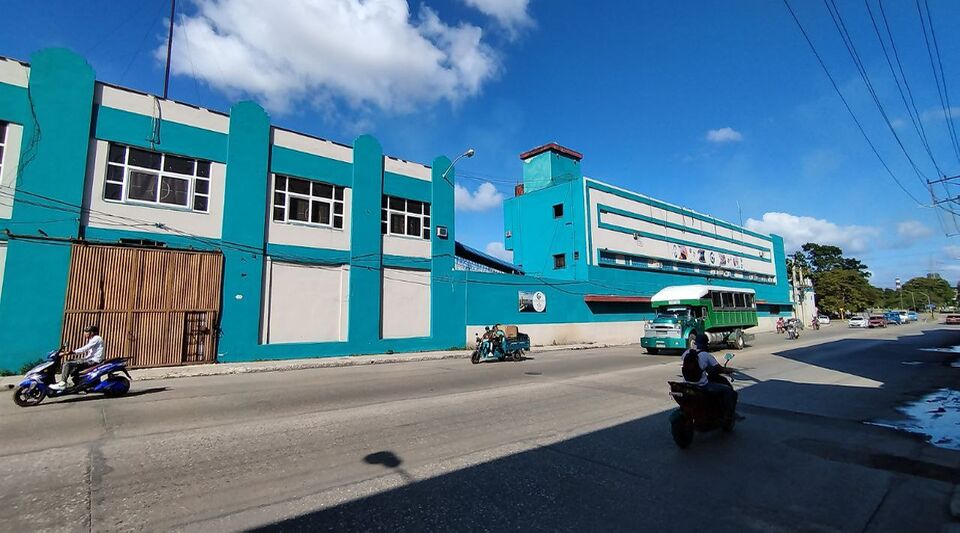For the Cuban illustrator Alejo Cañer (Cienfuegos, 2001) few things are as “explosive” as combining sex and politics, both create a “universe” like his, which can be appreciated from this Thursday —and until January— in the exhibition “Spit the face” in Havana.
To enter the cosmos conceived in the mind of this graphic designer, only 21 years old, you have to go through a small corridor where two rows of posters are displayed, all equally irreverent and provocative, in the cultural hotbed that is the Cuban Art Factory (FAC).
In one of them, a man—muscular, handsome, with lipstick and in shorts—carries on the shoulders of another who shows his biceps and a tattoo with the national emblem on his bare chest. Behind both of them is the legend: “Military service”.
For a space of a few meters, there is everything: from a ‘pop art’ of the Cuban national hero Antonio Maceo and a Kim Kardashian with a blouse from the state Federation of Cuban Women to a naked boy in heels hugging the leg of a agent and yelling: “Hey police, dick.”
The posters are a mixture of bright colors -at times, electric-, photographs with revolutionary iconography, snippets of daily life and a ‘queer’ (queer, in English: not heterosexual) aesthetic that captivates the viewer.
While showing his works one by one to the journalist Juan Carlos Espinosa, from efeCañer admits that the display is really “a whim” to close the year, see his friends and have the added value of unknown people discovering his work, exhibited primarily on Instagram.
NORMALIZE THE ‘CUIR’
The main message of the exhibition, according to Cañer, is to “normalize” what for a long time was -and in many cases continues to be- classified as “improper conduct”. And at the same time make “what is different compact between what is politically correct and what is stately correct”.
This game between the sexual and the political, he points out, walks a thorny path that usually leads to censorship, either because of the quirky theme or because of irreverence towards the established.
“There are two extreme points of censorship: (there is) sexuality, we all love sexuality (…) We are all sexual people. And mixing it with politics (…) many people have told me that it is political or graphic humor. I do not do it with that intention. I try to focus more on aesthetics, ”she adds.
The Cuba of 2022 is developed with government support, at least on paper, for the agenda LGTBIQ+. The Family Code, which contemplates both marriage and adoption between people of the same sex, was approved in a referendum last September.
Although some activists have described this fact as a modest victory for a group that lived illegally until a few decades ago, others like Cañer feel that legislation cannot erase decades of homophobia with one stroke of the pen.
“There is still a long way to go, it is not about approving a Code or approving a law and that’s it. It is about exercising it, that the citizen understands that a law does not have to be approved to respect it ”, he affirms.
Cañer recalls that he is not the first to mix sexuality with political messages on the Island —as an example, he recites a long list of inspirations— and reflects on how, since the approval of the Code, he has noticed a kind of “acceptance” of “sexual dissidence” because it is “something new” for some people.
“I am not doing anything new… I am making my vision of how a Cuban can be part of another, more liberal universe. I try to position (the posters) in extremely political places because the strength of this image of a queer person is the attitude that all people should take, ”she adds.
CUBAN GENERATION Z
The spotlight of the Cuban scene focused on him for the first time, or at least more intensely, in 2020 when his poster “La lucha” circulated, a rainbow flag made up of six machetes reminiscent of those wielded by the first Cuban independentistas in XIX century.
Art Factory reopens after a two-year closure due to the pandemic
At the end of the day, this designer is part of a generation Z that is different from the rest of the West, one that had its first contact with 3G internet just four years ago, when it arrived in Cuba. He was then 17 years old. “If my generation had not had the internet, it would have been a different person,” he stresses.
Like many young people in Cuba, he looks forward to the possibility that his work will take him to other latitudes. Although in the short term he has other things in mind: “I would very much like to do more design for theater and continue working with illustrations,” he concludes.
Juan Carlos Espinosa/Efe/OnCuba.






